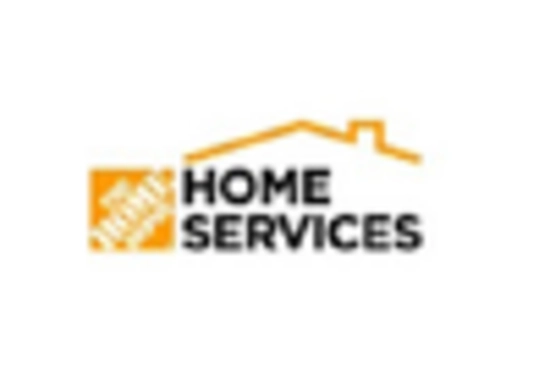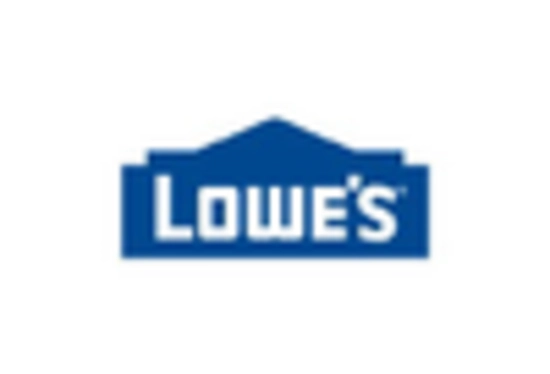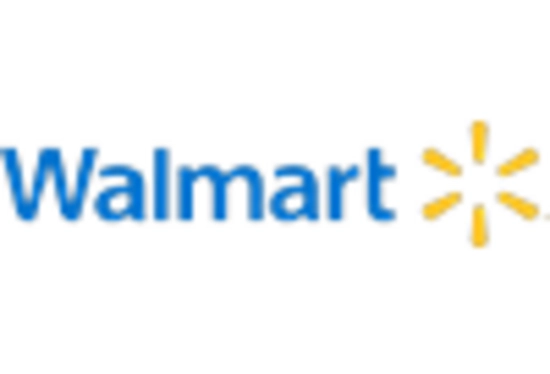The Homeware Market is currently characterized by a dynamic competitive landscape, driven by evolving consumer preferences and technological advancements. Major players such as IKEA (SE), Home Depot (US), and Wayfair (US) are strategically positioning themselves to capitalize on these trends. IKEA (SE) continues to emphasize sustainability and innovation in product design, while Home Depot (US) focuses on enhancing its digital capabilities and customer experience. Wayfair (US), on the other hand, leverages its extensive online platform to offer a vast array of home goods, indicating a shift towards e-commerce dominance in the sector. Collectively, these strategies contribute to a competitive environment that is increasingly reliant on technology and consumer engagement.
Key business tactics within the Homeware Market include localizing manufacturing and optimizing supply chains to enhance efficiency and responsiveness. The market structure appears moderately fragmented, with a mix of large retailers and niche players. This fragmentation allows for diverse consumer choices but also intensifies competition among key players. The influence of major companies is significant, as they set trends and standards that smaller entities often follow, thereby shaping the overall market dynamics.
In August 2025, IKEA (SE) announced the launch of a new line of eco-friendly home products, which underscores its commitment to sustainability. This strategic move not only aligns with global consumer trends favoring environmentally responsible products but also positions IKEA as a leader in sustainable homeware solutions. The introduction of these products is likely to enhance brand loyalty and attract a growing segment of eco-conscious consumers.
In September 2025, Home Depot (US) unveiled an advanced augmented reality (AR) feature within its mobile app, allowing customers to visualize products in their homes before purchase. This innovation reflects a broader trend towards digital transformation in retail, enhancing the shopping experience and potentially increasing conversion rates. By integrating AR technology, Home Depot (US) aims to differentiate itself in a competitive market, appealing to tech-savvy consumers who value interactive shopping experiences.
In July 2025, Wayfair (US) expanded its logistics network by partnering with a leading last-mile delivery service. This strategic alliance is expected to improve delivery times and customer satisfaction, addressing a critical pain point in e-commerce. As online shopping continues to grow, efficient logistics will be paramount for maintaining competitive advantage, and Wayfair's proactive approach may solidify its market position.
As of October 2025, current competitive trends in the Homeware Market are heavily influenced by digitalization, sustainability, and the integration of artificial intelligence (AI) in operations. Strategic alliances are increasingly shaping the landscape, enabling companies to enhance their service offerings and operational efficiencies. Looking ahead, competitive differentiation is likely to evolve from traditional price-based competition to a focus on innovation, technology integration, and supply chain reliability, as companies strive to meet the changing demands of consumers.


















Leave a Comment